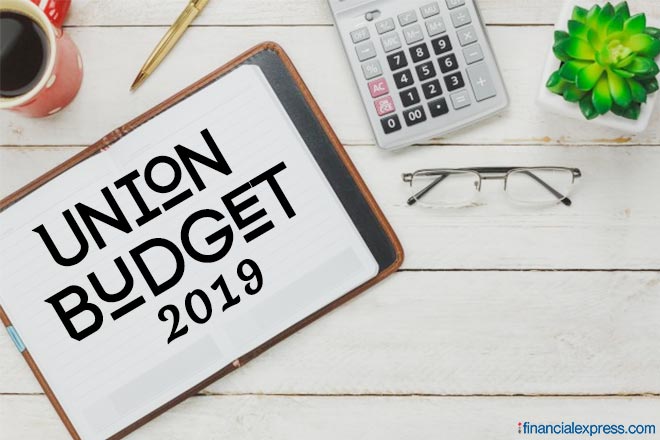By Srinivasan Anand.G
Budget 2019-20: The Middle-class comprised 11.7 % of the population in 1999. Its proportion in the population is now estimated at 40%. Some figures say middle class together with neo middle class form 49% of the total population.Therefore, any elected government can ignore the middle-class at its own peril. Elections will be held later this year in Maharashtra, Haryana and Jharkhand. Middle-class voters will play a crucial role in these states. It is unlikely that there will be a very huge increase in threshold exemption limit. Nor is there likely to be tinkering of tax slabs. These are likely to be taken care of in Direct Tax Code which is expected later this year. Although, it may not be a populist playing to the gallery budget, attempts will be made to remove anomalies in tax provisions affecting the middle class and there would be more savings linked tax incentives.
Increase Standard deduction for family pension to Rs.50,000
The Standard deduction for pensioners is Rs.50,000. For those drawing family pension, standard deduction still one-third of such income or Rs.15,000, whichever is less. It will be proper to amend section 57(iia) to bring family pension on par with regular pension in the matter of standard deduction.
Watch video: What is GDP?
Clarifying tax exemption for disability pension for armed forces
CBDT circular No.13/2019 dated 24.06.2019 in respect of tax exemption on disability pension of armed forces has disappointed veterans and they are agitated. As the term invalided from service is not defined in the old Notification, Income-Tax Act may be amended by inserting a definition clause clarifying that “invalidated” shall be as defined in service rules applicable to armed forces. Alternatively, this may be clarified by another CBDT Circular outside of the Budget
Savings -linked tax incentives
Deductions under section 80C in respect of life insurance premia, deferred annuity, PF contributions, PPF, tuition fees of kids, principal component of home loan EMI, NSC etc is capped at Rs.1,50,000 under section 80CCE.. This cap of Rs.1,50,000 is woefully inadequate and gets exhausted in tuition fees of children and EMI payments for home loans. If a dramatic boost to savings and capital formation has to be given, a dramatic increase of limit under section 80C from 1,50,000 to Rs.10,00,000 is the need of the hour with a sub-limit of Rs. 5,00,000 for tax-saver fixed deposits with banks. The lock-in period of 5 years for these deposits be reduced to 3 years. This will incentivise people to park their savings in bank deposits, enable banks to get deposits at lower interest rates , expand credit through credit multiplier mechanism and boost growth. This will enable banks to pass RBI rate cuts through lowering of lending rates and boost growth. This will help Govt to boost housing sector without tinkering with limit of deduction of home loan interest as home loan interest will also be lowered.
Rationalisation of Atal Pension Yojana
Many potential entrants into the Central Government’s flagship contributory pension scheme of Atal Pension Yojana are put off by the cap of Rs.5000 on the pension they can get under the scheme. Also, the age limit of 40 at the time of entry is a barrier. If the Govt raises the pension cap to Rs.10,000 per month and entry age limit to 50 years, the scheme may get even better response and will expand social security net of minimum guaranteed pension.
Make it a Great Shopping Time–GST cashback on cashless purchases during festive season
Government should consider a 50% cash back of Central GST paid to buyers on all purchases during festive season up to Diwali. This cash back should be allowed on all cashless purchases. This will promote cashless and boost consumption and also GST collection. This will be win-win for businesses, consumers and the government. This is not a levy of tax or exemption but an expenditure on incentives to promote cashless. This can be shown in expenditure side of budget and will not need GST Council’s approval. Government needs to think out of the box to boost economy and the indirect tax collections.
Exempting ESOPs from taxation on grant and taxing them only when employee sells shares
Employees Stock Option Plan facilitate workers’ participation in ownership management by making them shareholders in the company.They motivate employees to perform well as if they are working for their own business. Presently, ESOPs are taxed as perquisites in the hands of employees at the time of exercise of option at Fair maker value on that date less amount paid by employee. When employee sells the shares, capital gains are taxed. The taxation as perquisite at the point of exercise of option should be done away with and only capital gains on sale be taxed. This would boost startups.
Conclusion
One can expect significant tax benefits to the middle-class not inconsistent with a growth-oriented budget to boost savings and consumption and without playing to the gallery.
(The author is Sr.Consultant, M/s Taxmann Publications Pvt Ltd..Views are the author’s personal)

